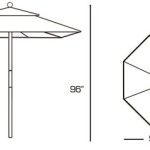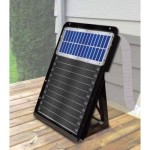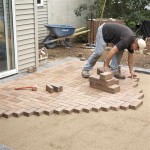Flagstone Patio Sand Grout: A Comprehensive Guide
Flagstone patios offer a timeless aesthetic, blending natural beauty with functionality. The success and longevity of a flagstone patio, however, heavily rely on selecting and properly applying the right materials, particularly the jointing material used between the flagstones. While mortar provides a rigid, durable option, sand grout, specifically polymeric sand, offers a more flexible and often more user-friendly alternative. This article delves into the details of using sand grout for flagstone patios, exploring its advantages, disadvantages, selection criteria, installation techniques, and maintenance considerations.
The term "sand grout" in the context of flagstone patios usually refers to polymeric sand. Polymeric sand is a blend of fine sand and polymers, typically acrylic or modified cementitious binders. When activated with water, these polymers bind the sand particles together, creating a flexible, durable joint that resists erosion, weed growth, and insect infestation. This distinguishes it from regular sand, which is prone to washing out and easily allows vegetation to take root.
Advantages of Using Sand Grout for Flagstone Patios
The popularity of polymeric sand grout for flagstone patios stems from a number of significant advantages. Understanding these benefits is crucial for deciding if it's the right choice for a particular project.
Flexibility and Movement Accommodation: Flagstone patios are inherently susceptible to movement due to temperature fluctuations, ground settling, and freeze-thaw cycles. Polymeric sand's inherent flexibility allows it to accommodate these movements without cracking or crumbling, unlike rigid mortar joints. This flexibility is particularly crucial in regions with significant climate variations, preventing premature deterioration of the patio surface.
Ease of Installation: Compared to traditional mortar grouting, polymeric sand installation is generally simpler and faster. It involves sweeping the sand into the joints, compacting it properly, and then lightly watering it to activate the polymers. This eliminates the need for precise mixing ratios and skilled troweling techniques associated with mortar application.
Weed and Insect Resistance: The polymeric binders in the sand create a dense, impenetrable barrier that inhibits weed growth and prevents insects from burrowing into the joints. This reduces the need for frequent weeding and insecticide treatments, contributing to a lower maintenance patio surface. This also significantly improves the overall aesthetics of the patio, preventing unsightly weeds from disrupting the flagstone pattern.
Erosion Resistance: Unlike regular sand, polymeric sand is designed to resist erosion from rain, wind, and foot traffic. The polymers bind the sand particles tightly together, preventing them from being washed out or blown away over time. This is especially important in areas with sloped patios or high rainfall.
Aesthetic Appeal: Polymeric sand is available in a variety of colors, allowing homeowners to match or complement the natural tones of their flagstone. This provides greater design flexibility and allows for a customized look. The consistent color and texture of the sand grout also contribute to a more unified and visually appealing patio surface.
Disadvantages and Considerations
While polymeric sand offers numerous advantages, it's important to acknowledge its potential drawbacks and consider certain factors before making a decision.
Permeability: Polymeric sand, while resistant to erosion, is not entirely impermeable. Water can still seep through the joints, which can contribute to heaving and settling over time, especially in poorly drained areas. Proper base preparation and drainage are essential to mitigate this risk.
Surface Staining: If not applied correctly, polymeric sand can stain the surface of the flagstone, particularly porous types. It is crucial to remove all excess sand from the surface before watering and to follow the manufacturer's instructions carefully. Testing a small, inconspicuous area before applying to the entire patio is highly recommended.
Cost: Polymeric sand is typically more expensive than regular sand, although the long-term benefits of reduced maintenance and increased durability may outweigh the initial cost difference. However, the overall project cost should be carefully considered.
Limited Joint Width: Polymeric sand is generally best suited for joints ranging from approximately 1/4 inch to 4 inches in width. Wider joints may require different types of jointing materials or specialized polymeric sand formulations. Consult the manufacturer's specifications for recommended joint widths.
Installation Sensitivity: While generally easier than mortar, polymeric sand installation still requires careful attention to detail. Over-watering or improper compaction can lead to issues such as hazing or joint failure. Adhering to the manufacturer's instructions is paramount.
Key Steps for Successful Sand Grout Installation
Proper installation is crucial for maximizing the benefits and minimizing the risks associated with polymeric sand. The following steps outline a general installation process, though it's essential to always consult the specific product's instructions.
Preparation is Paramount: The foundation of a durable flagstone patio lies in proper base preparation. A well-compacted base of crushed stone is essential for providing stability and drainage. The flagstones should be set on a layer of bedding sand or stone dust to ensure a level and stable surface. Ensure the flagstones are clean and dry before applying the sand grout.
Sweeping and Compaction: Pour the polymeric sand onto the patio surface and sweep it into the joints using a stiff-bristled broom. Ensure the joints are completely filled, compacting the sand with a hand tamper or a rubber mallet to remove air pockets. Multiple passes may be necessary to achieve proper compaction.
Surface Cleaning: Thoroughly sweep the patio surface to remove all excess polymeric sand. This is a critical step to prevent staining. Use a leaf blower or a soft brush to remove any remaining traces of sand from the flagstone surface. Pay particular attention to textured or porous flagstones, as they are more susceptible to staining.
Water Activation: The watering process activates the polymers in the sand, causing them to bind together. Use a fine spray nozzle and water the patio in several light passes, allowing the water to soak into the joints. Avoid over-watering, as this can wash away the polymers and weaken the joints. Follow the manufacturer's instructions for the specific amount of water required and the curing time.
Curing and Protection: Allow the sand grout to cure completely according to the manufacturer's recommendations. This typically takes 24 to 48 hours, depending on weather conditions. During the curing process, protect the patio from rain or excessive foot traffic. After the curing period, the patio is ready for use.
Selecting the right type of polymeric sand is equally important. Different formulations are available for various joint widths, flagstone types, and climate conditions. Consult with a landscape professional or a supplier to determine the best product for a specific project. Also, consider the desired color of the sand, ensuring it complements the flagstone and the overall landscape design.
Maintaining a flagstone patio with polymeric sand grout involves regular sweeping to remove debris and prevent the buildup of organic matter. Periodically inspect the joints for any signs of cracking or erosion and repair them as needed. Power washing should be done with caution, using a low-pressure setting and a wide nozzle to avoid damaging the sand grout. Avoid using harsh chemicals or abrasive cleaners, as they can degrade the polymers and weaken the joints. With proper care, a flagstone patio with polymeric sand grout can provide years of enjoyment and enhance the beauty of any outdoor space.

What Is The Best Material To Put Between Flagstone Firstfruits Landscaping

Flagstone Installation With Enviro Bond Sand

How To Lay Flagstone Installation Guide Landscaping Network

Flagstone In Stone Dust Or Sand Irwin

How To Lay Flagstone Installation Guide Landscaping Network

What Is The Best Material To Put Between Flagstone Firstfruits Landscaping

Cement Alternative For Flagstone Patio Joints Hometalk

How To Add Polymeric Sand Quikrete Walkmaker Pavers

Building A Path Or Patio Is This Project For You Buffalo Niagaragardening Com

Flagstone Joints Landscaping Network








